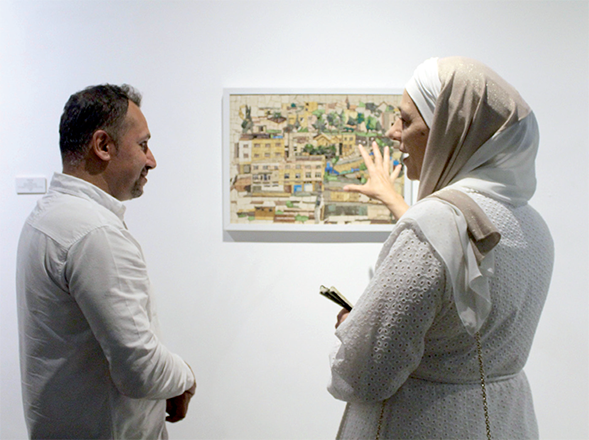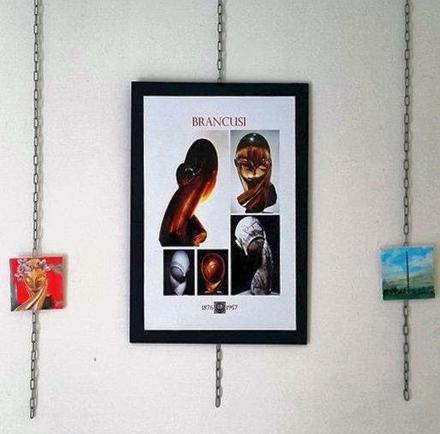You are here
Jerash sculptor inspired by ancient ruins of his hometown
By Ahmed Bani Mustafa - Jul 04,2016 - Last updated at Jul 04,2016

Artist Shafi Seebrani works on a sculpture recently. His work is on display at universities and some major streets in Irbid, Ajloun and Jerash, among other governorates (Photo courtesy of Shafi Seebrani)
AMMAN – When Shafi Seebrani grew up playing around the ruins near his home in Jerash, he did not know the ancient city would be the platform from which he would launch an illustrious artistic career.
In 2009, Seebrani was granted the State Appreciation Award in the field of art for his efforts to enhance cultural life in Jordan.
As a young boy roaming the ruins in his hometown, Seebrani observed the differences between civilisations, and the distinctions in their design structures and carvings, he told The Jordan Times in a recent interview.
Inspired by the ancient Roman and Greek civilisations, he began to get acquainted with different types of rocks, and which ones were most suitable for carving,
He also collected naturally coloured stones, sometimes from distant governorates, using traditional techniques to create mosaics, he explained.
Able to create mosaic portraits of anybody upon request, the artist said his first portrait was of His Majesty King Abdullah.
Creating a mosaic portrait is as difficult as carving a statue, Seebrani said, because the artist has to make sure that he/she acquires the likeness between the person and the piece of art.
Encouraged by his family members, Seebrani began sculpting by carving a capital — the topmost part of a column — in the architectural style of the Ionic order.
Seebrani carved the capital to be used as a desk, mixing the ancient with the modern.
He started showing his masterpieces at local and national art exhibitions, and at one of the exhibitions he was called to work at the Royal Court, where he stayed for three years.
After showing his work at an exhibition at Yarmouk University in 2001, he was employed at the university’s deanship as a sculpture and mosaic supervisor.
Since then, he has taught students the arts of sculpture and mosaic in addition to working at the faculty of archaeology.
Seebrani has created several well-known monoliths that were sponsored by the ministries of culture and municipal affairs in Amman and other governorates.
His major works include the monolith at the Culture Circle in Irbid, a massive fist grasping a bunch of wheat spikes and several giant books installed in various places.
His work can also be seen at Yarmouk University and Al Ahliyya Amman University.
Keen to encourage the appreciation of art in Jordan, Seebrani called for sculptors to be trained and supported by faculties of arts and the Ministry of Culture.
Related Articles
JERASH — Although Khaled Munajid, a Jordanian sculptor in his sixties, has been described by his peers as "the living Michelangelo", he is s
AMMAN — The Jordan National Gallery of Fine Arts on Monday celebrated the opening of two exhibits titled “With the Mosaic, Contemporaneity i
AMMAN — As part of the celebrations of the International Francophonie Day, a photo exhibition depicting the works of Romanian sculptor and a


















